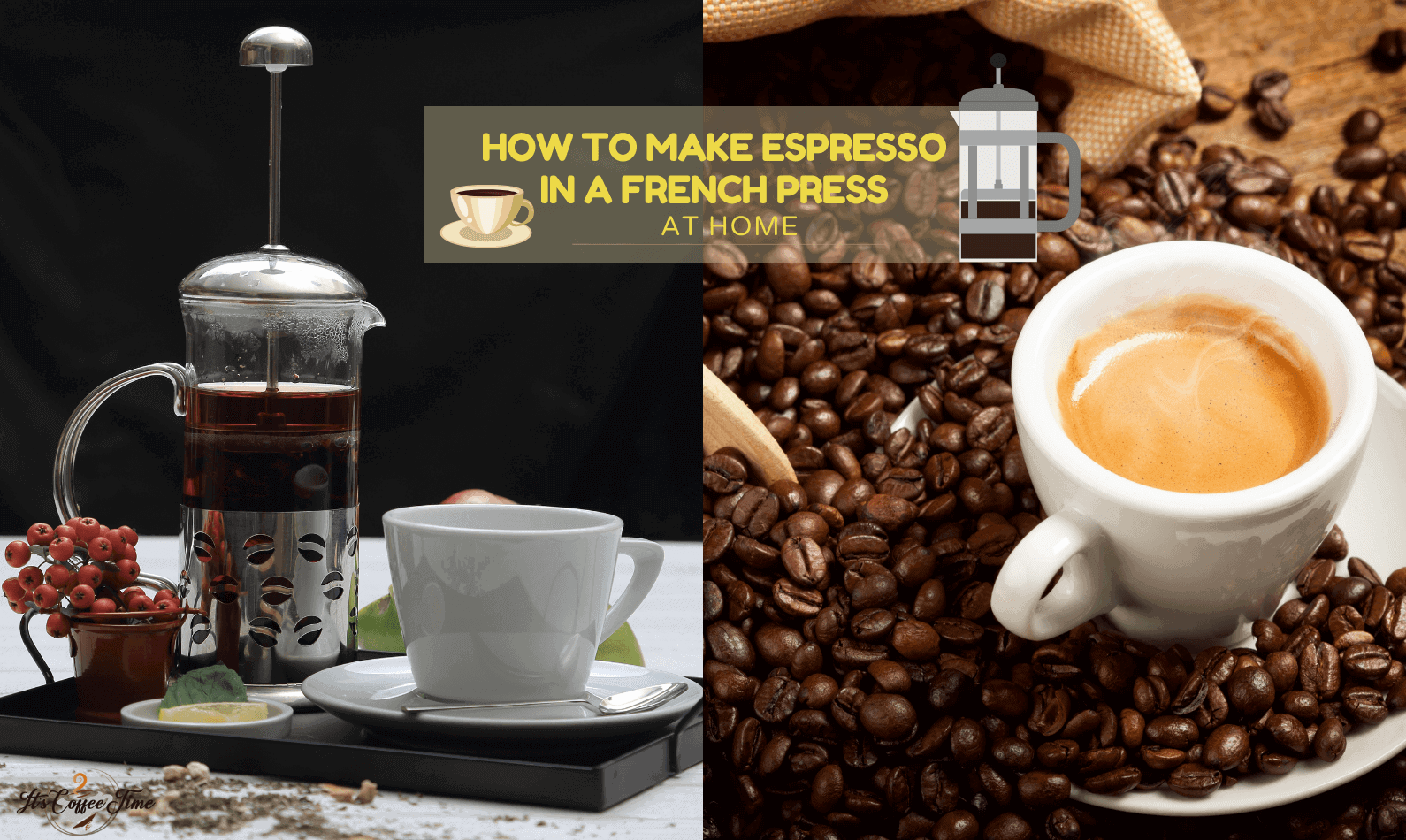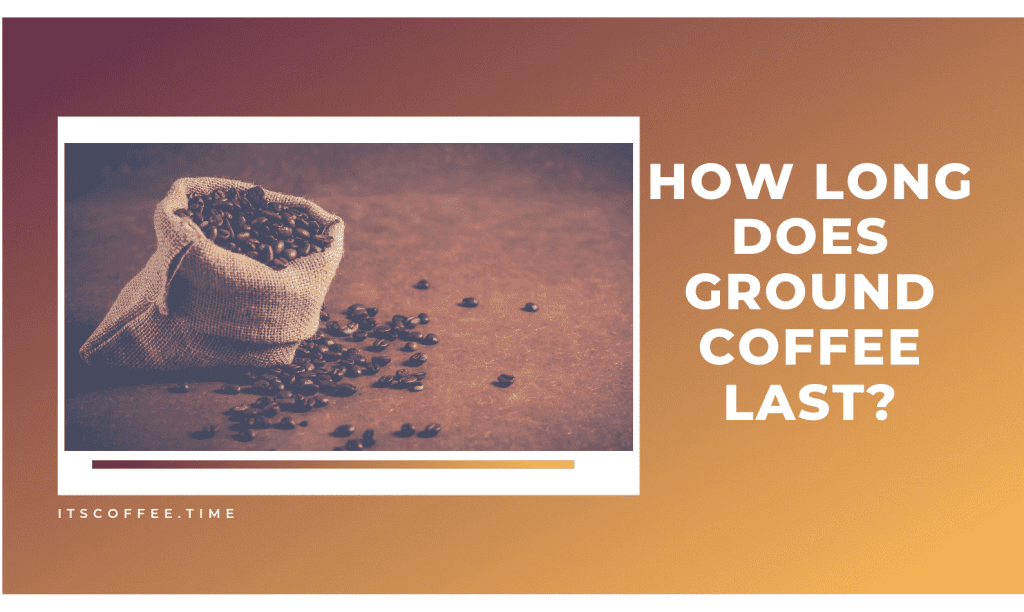How to Make Espresso in a French Press at Home: Espresso is a preference of many coffee drinkers. The scent is pretty addictive. Yet that is normally done in a coffee shop unless you have your own computer. And what are we restricting ourselves? You may already have your favorite device for making espresso in your kitchen: a French Press. You can make a drink with the right technique that closely resembles your favorite, solid coffee brew.
Steps of Making Espresso in a French Press at Home
- Grind your coffee
- Heat the Press
- Add the coffee
- Let the coffee bloom
- Pour water in
- Let the espresso steep
- Push the grounds down
- Pour
French Press Method
Here’s how many coffee lovers are getting the most out of their favorite grounds in an easy way. Everything it takes is a glass : or often aluminum : jug with a mesh filter and plunger that can be pressed down firmly inside. For a moment, you should let your coffee brew and then move the grounds down, and pour a cup.
Pros and Cons of French Press
Why Should You Choose French Press for making Espresso?
The French Press method is valued as it helps almost everyone to make nice cups of coffee : and yes, even espresso. Such presses are available in almost every big shop and are less costly than state-of-the-art machines. And if you practice enough, they will produce the same coffee price as top-end coffee makers. They’re also perfect for households because you can make 2 or 3 cups at a time. This means less coffee wastage compared with large machines. Sometimes too much coffee is made and at the end of the day, you’ll have to throw out the cold drink.
Requirements: How to Make Espresso in a French Press
- A French Press, available in most stores
- Coffee beans or grounds marked as “˜Espresso’ as this will give you the aroma you’re looking for
- A coffee grinder
- A measuring tool
- A spoon or whisk like utensil which can stir the coffee
The French Press Process of Making Perfect Cup of Espresso
Step 1: Grind Your Coffee
You need to grind your coffee perfectly, as this allows the extraction of more flavor when the particles reach the hot water. But French Press’ unique design : different from espresso machines : means these fine particles will pass through the filter. Be prepared to do some trial brews : with various grounds : before you get the ideal size to maximize flavor but stay under the filter. And using a top-of-the-line coffee grinder is perfect because you can make minor changes.
Step 2: Heat the Press
The French Press doesn’t immediately heat up water as drip coffee makers do, so you must first boil water in a kettle. Then remove the press plunger part and pour a little of that water into your press and swirl it around to:
- Heat up the bottle, so that the temperature of the water does not drop when making espresso
- Prevent cold glass from cracking when a significant volume of hot water is poured in
Step 3: Add Coffee
Now you have to find the right quantity of coffee grounds to bring in. A balance between your personal preferences and those general guidelines used to make espresso would be the ideal amount:
- An espresso takes about 20g of fine grounds per cup of water that you’ll pour in the press
- Double or triple this number, depending on whether a 2-cup or 3-cup press is used
Throw the grounds into the news, with the plunger still missing.
Step 4: Let the Coffee Bloom
Now that’s where technology plays a role. You want your coffee grounds to get the most flavor. You will get this if you encourage your grounds to bloom. That term refers to the time of:
- The terrain recovers its natural oils
- Gasses released
It is achieved by applying only a few : about 1/4-of the water to cover the surface, so that they are adequately moistened but not saturated. Those oils hold the flavors that you love so much and your beer tastes better when those gasses escape. The reason expresso is solid but not inherently bitter is that all of these oils are optimally extracted by the brewing processes. And now you know how a French Press would do it. This cycle takes only 30 seconds to complete.
Step 5: Pour in Your Water
You should pour the rest of your water in now. The optimal water temperature you pour in should be at 195 ° F (90 ° C). If you used to boil the water with a pot, just wait half a minute before pouring it into the bath. That needs careful calculation here. For every 20 g of grounds you put inside, you need a cup of water. If you do so properly : and keep track of your different brews : it also makes it easier to tailor your upcoming brews to your taste.
Step 6: Let the Espresso Steep
Now you need to give the time to work your brew. Give it a short swirl with your spoon or whisk so you don’t know that the grounds are stuck together. You want to reveal the flavor of any surface to the moisture. That’s how you drive some of the taste out. Now place the plunger in the lever, without still moving the filter down. Sealing the press means you’re not going to lose any heat in the steeping process. Note, when it comes to making espresso, the temperature is important, since the high temperatures help to extract flavors. It takes one to four minutes to steep something. You’ll figure out once again what fits best for you to suit what your palate loves:
- Stepping for longer gives better brews
- Long steepness will also change the flavor
Conversely, a short period of steeping will result in bland, sour coffee. Seek the right balance and enjoy playing.
Step 7: Push Down the Grounds
You need to get rid of those grounds after steeping so that you can enjoy your brew. Gently step on the plunger and force it down towards the pressed edge. Here’s where you’ll find out if your grounds are too fine. If you see too many leftover particles in your mix, next time you’d better grind the beans differently. Some do not matter, but you do not want a grainy beverage. Don’t overpush. Know, there is pressure inside the chamber and you don’t want it to break the glass or damage the components.
Step 8: Pour
This move isn’t just an afterthought. It is imperative that you pour the brew out : into your cups or some other bottle : as soon as you press the plunger down. You run the risk of being bitter if you leave the espresso inside because it will still be in contact with the grounds under the filter. Decant the liquid easily, and enjoy it. There’s nothing, after all, as exciting as a new, hot cup of espresso, right?
Conclusion: How to Make Espresso in a French Press at Home
So, it is very simple. Everything you need for a shot of a homemade espresso is:
- The correct instruments
- Measurement Tight
- A variety of technique
Get that right and the brew you’re going to drink out of the French Press will taste as good as the one you’ve had in your favorite coffee shop. If the aromas and power of the brew are what you love about espressos, it is possible to get it right with your press, because that is exactly what a French Press is supposed to do.
Read more about Best Burr Coffee Grinders under $200
And the best of all is that you can now tailor your espressos to match your taste. Ready to torment your mates next time they come over? Or maybe you’ve come across more complex ways to make espresso without a computer. Leave your input in the comment section and share your thoughts with the rest of us.




